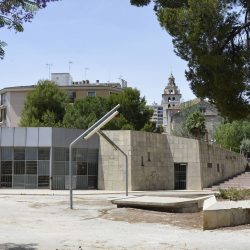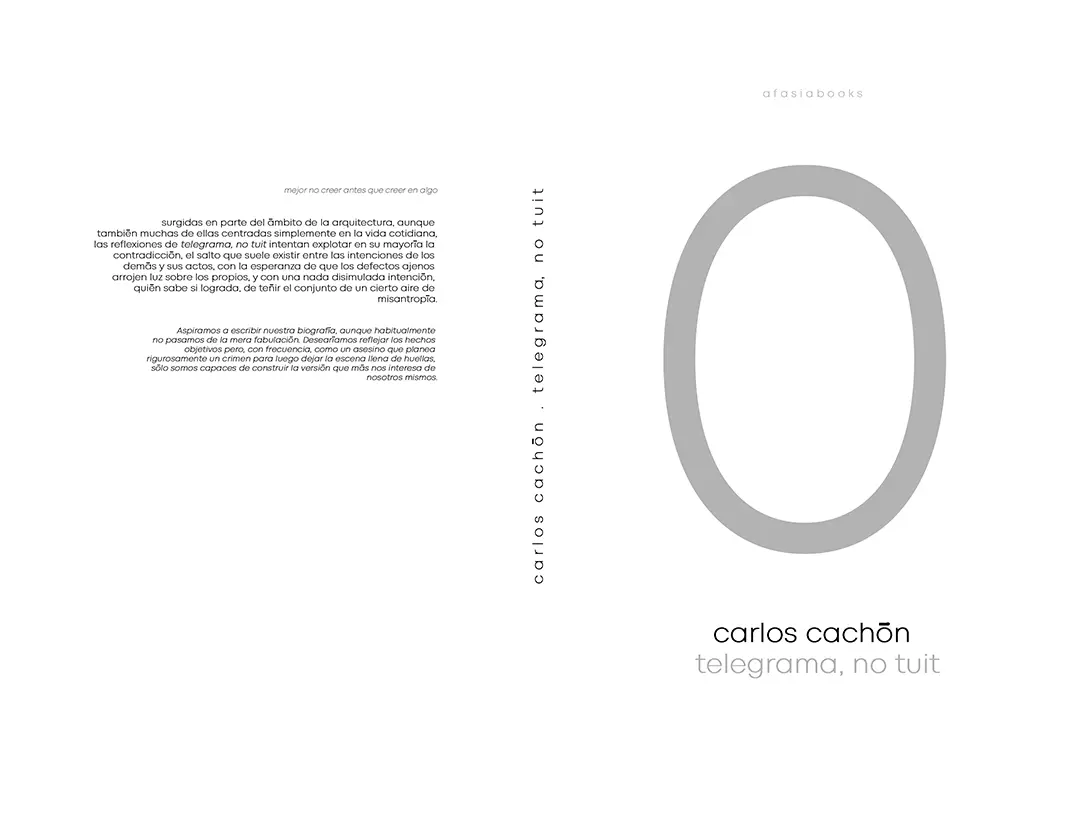
Son Estudi @son_estudi
This is a project for the transformation of an existing public space. The intervention enhances existing qualities and elements through its use and enables the place as an infrastructure for future lives.
The plaza is located in a key situation of articulation between the historic center and different urban fabrics, marked by both pedestrian and vehicular traffic flows that cross and surround it.
Based on several problems, the city council of Inca convened in 2016 an open competition for its reform.
“Fonamental és una proposta que parteix dels fonaments de la plaça”. The underground physically conditions the plaza due to the presence of two parking floors. One of them emerges on the surface, causing the plaza to be divided longitudinally by a 4-meter high wall, some service spaces and high skylights. This set produced a barrier effect, both between the different levels of public space and between the relationships of people in the place.
The project acts at the intersection between levels, not only to improve the integration of the different spaces of the plaza and its surroundings, but also to sow, nurture and articulate new possibilities for the future of this public space. Where the wall used to divide, there is now a new artificial topography for interaction (bleachers). Where people used to cross in the dark at night or under the sun in summer, now there is shade, vegetation and lighting at night for strolling. (pergola). Where there was no activity, now there is a new space that gives life to the plaza (local).
The set of bleachers + pergola + local is designed in an interconnected way, transcending the concreteness of the elements that compose it and overcoming its immediate or separate uses. The set crosses longitudinally the plaza and is projected as an expandable system. This involves combining multiple criteria; constructive, programmatic, monumental, everyday, environmental and life cycle of the whole.
The main constructive strategy is based on the geometric reorganization of the plaza, taking as a base the structure of pillars and waffle slab of the subway parking lot, thus coordinating the geometric and structural logic of the whole. In addition to the constructive argument of continuity between new and old structures, the fact of aligning sets a clear criterion for future growth of the current configuration. This reinforces the possibility of the support system extending throughout the plaza. In this way, the public space responds to a renewed order that affects the infrastructural vocation of the project, aligning construction and concept.
We understand that a public space is one that is capable of enabling a multitude of activities and situations by making the most of existing resources. From the infrastructural understanding of the project, the reform of Plaza Mallorca in Inca transforms an existing public space and takes advantage of its potential to provide it with new present and future capabilities.
_
Nombre del Proyecto: Fonamental –Transformación de Plaza Mallorca
Oficina de Arquitectura: Son Estudi
–
Año finalización construcción: 2021
Superficie construida: 5900m2
Ubicación: Inca, Islas Baleares.
–
Arquitectos a Cargo: Gerardo Pérez de Amezaga Tomás y Pau Villalonga Munar
Arquitecto Técnico: Tomeu Ramon
Clientes: Ayuntamiento de Inca
Ingeniería: Jordi Grimalt
Constructora: Obras MAN
Este es un proyecto de transformación de un espacio público existente. La intervención potencia calidades y elementos ya existentes a través de su aprovechamiento y capacita el lugar como infraestructura para futuras vidas. La plaza se encuentra en una situación clave de articulación entre el casco histórico y distintos tejidos urbanos, marcada por los flujos tanto peatonales como de tráfico rodado que la atraviesan y la rodean. A partir de varias problemáticas, el ayuntamiento de Inca convocó en 2016 un concurso abierto para su reforma. “Fonamental és una proposta que parteix dels fonaments de la plaça”. El subsuelo condiciona físicamente la plaza debido a la presencia de dos plantas de aparcamiento. Una de ellas sobresale en superficie, provocando que la plaza quedara dividido longitudinalmente por un muro de 4 metros de altura, unos espacios de servicio y unos lucernarios elevados. Este conjunto producía un efecto barrera, tanto entre las distintas cotas del espacio público como entre las relaciones de las personas en el lugar. El proyecto actúa en la intersección entre niveles, no sólo para mejorar la integración de los distintos espacios de la plaza y su entorno, si no para sembrar, nutrir y articular nuevas posibilidades para el futuro de este espacio público. Ahí donde el muro dividía, ahora hay una nueva topografía artificial para relacionarse (grada). Ahí donde la gente cruzaba a oscuras de noche o bajo el sol en verano, ahora hay sombra, vegetación e iluminación de noche para pasear. (pérgola). Ahí donde no había actividad, ahora hay un nuevo espacio que da vida a la plaza (local). El conjunto grada + pérgola + local se diseña de forma interconectada, trascendiendo la concreción de los elementos que la componen y superando sus usos inmediatos o por separado. El conjunto cruza de forma longitudinal la plaza y se proyecta como un sistema expansible. Ello pasa por combinar múltiples criterios; constructivos, programáticos, monumentales, cotidianos, medioambientales y del ciclo de vida del conjunto. La principal estrategia constructiva se basa en la reorganización geométrica de la plaza tomando como base la estructura de pilares y forjado reticular del aparcamiento subterráneo, coordinando así la lógica geométrica y estructural del conjunto. Además del argumento constructivo de continuidad entre nuevas y antiguas estructuras, el hecho de alinear asienta un criterio claro para un futuro crecimiento de la configuración actual. Ello refuerza la posibilidad de que el sistema de soportes se extienda por toda la plaza. De esta forma, el espacio público responde a un orden renovado que incide en la vocación infraestructural del proyecto, alineando construcción y concepto. Entendemos que un espacio público es aquel capaz de posibilitar multitud de actividades y situaciones aprovechando al máximo los recursos existentes. Desde el entendimiento infraestructural del proyecto, la reforma de la Plaza Mallorca en Inca transforma un espacio público existente y aprovecha sus potenciales para dotarlo de nuevas capacidades presentes y futuras.

























